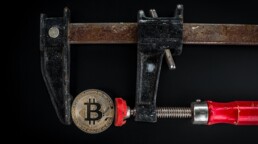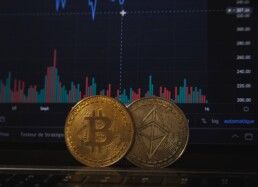Save your bitcoins - Security Rules
Safety first. With crypto, this is imperative.
Lets start from a very important premise. Bitcoin is currently considered a safe system.
The weak point in the use of bitcoin is the user.
the weak point is you.
But this big problem can be solved with careful planning and habits every time you use bitcoin.
Losing your bitcoins means losing access to the wallets where they are stored or sending them to people or exchanges from which we can no longer recover them. Another example of a loss could be considered the theft of the wallet by a criminal.
Always remember that there is no way to delete a transaction on the blockchain, and those Bitcoins sent cannot come back. There is no regulatory autorithy that will protect you from malicious people and get your bitcoins back. Is only your responsibility to protect yourself
But what are the steps to protect yourself.
First of all, a wallet must be created, and this wallet will have a private key. This private key must be keep secret and you must back it up
If you don't know what kind of wallet to open, check out our article on the various types of wallets.
To access this wallet, create a login password. Back up your login password.
Remember that you are not in control of wallets on exchanges, so do not forget funds on exchange unless you are trading. Exchanges are like banks, they own your money but control is in their hands.
For large quantities of bitcoins, it is imperative to use hardware wallets
Make a copy of the wallet's private key and password on a USB stick. Encrypt this key and hide it in a safe place. You can choose to have multiple keys with multiple passwords for the different wallets you are going to create. Obviously you don't have to forget the password otherwise you will lose everything.
Create one or more strong passwords,it means that you have to create password with at least 8 characters, better if there are more. With a mixture of lowercase and uppercase letters, numbers and special characters.
Do not use passwords from other accounts such as email.
A good idea for a password is a sentence made with one or more grammatical errors, or by substituting letters with numbers such as 5 instead of S
the best possible password, however, is a string of characters and numbers and random symbols but it is difficult if not impossible to remember
You can also use a password manager to generate and track passwords
Some hardware wallets require you to use Pin codes, always prefer 8-digit ones over 4-digit ones and don't use dates of birth.
When accessing exchanges, always try to use 2-factor authentication and not SMS. You can check out our 2-Factor Authentication video to learn more. SMS is not recommended because it could be intercepted by a hacker and used to defraud you or empty your wallet.
If you need to access an exchange or your wallet, it is absolutely not recommended to use a public wi fi. Wait until you have a secure line or use a VPN. Much better never to use public wifi.
You have to pay attention to the sites you use and check the emails that come to you. Phising sites and emails are a real threat.
check that you have a secure SSL connection via HTTPS. There are many scams with cloned sites and domains that look the same but that if carefully observed have very small discrepancies from the originals
Another precaution is not to click on the links within the unsecured emails. We can receive emails from the exchanges where we are registered but we must check carefully and if the email seems suspicious, throw it. Obviously never open attachments from these emails. Remember that an exchange email should contain your name, not just Sir or Dear Customer. Another test is to check the real origin of the email.
remember that transactions cannot be canceled or returned.
Precisely for this reason when you send money always check the sending address twice and never write the address manually,
because you will face always complicated address, and if you make a mistake and send money to an address that has nothing to do with it and you never get those coin back.
The security of your Bitcoins is entirely up to you.
Virgin BTC- A brand new Bitcoin...
Speaking of mining, you also need to know what virgin bitcoins are.
A virgin bitcoin is a bitcoin that has just been mined or that has never transacted on the blockchain or that has a certified transaction history.
In the world of cryptocurrencies, many scams have occurred against bitcoin users, while other bitcoins have been used for illegal activities, theft or money laundering.
Since the blockchain is visible to all, it is possible to track the history of every single bitcoin by checking its transaction history. Which is difficult but real.
The authorities of a country could keep an eye on some wallets with bitcoin inside involved in criminal actions. In this case, if these were passed on the wallet of some exchange, they could be blocked or not accepted by the exchange.
This can create concerns and some financial intermediaries may not accept bitcoins of non-certified origin.
And here a Bitcoin without transactions is very useful and therefore its price will be higher than a normal bitcoin, in the order of 20 or 30 percent more.
The increased regulatory push drives the demand for virgin bitcoins.
Bitcoins without a clean history are not to be considered dirty or unused but we simply don't know what their life was like before we had them in our wallet. Life that may have been extremely adventurous
Blockchain protocols: investors point of view
In previous articles we have seen that there are different types of coins and therefore there are different ways to create them, or rather, to mine these coins. Learn more about mining here.
With different protocols for creating coins, from the investor's point of view we have another feature to be studied before making any purchase.
In fact, cryptocurrencies investors must analyze the blockchain protocol before investing in coins. Consensus algorithms can be the key to success with effects on inflation rates, security and the total value of the currency. Learn what is a Blockchain here.
But what is a Blockchain protocol?
A blockchain protocol is the common term for defining consensus methods.
Consensus methods are different systems created to reach consensus and validate transactions in a blockchain network.
Some require miners to hold coins, others require hardware to mine such as computers or graphics cards.
We know there are 3 types of consent which are:
Proof of work, proof of stake and delegated proof of stake
Let's briefly see some details:
Proof of work: from energy to value
Bitcoin and other coins use Proof of Work (PoW) as a consensus algorithm.
In the PoW consensus type, miners participate in the network by adding large amounts of computing power.
Big miners create physical mining rigs, consisting of several graphics cards in series, if not hundreds.
More powerful platforms equate to more chances of closing the next block and receiving the next block's reward coins.
Blockchain Transactions also include transaction fees.
So, in this case, the miner has to buy a large number of expensive graphics cards, spending a lot of money before earning a single bitcoin (or any other currency).
Miners can create a mining pool to combine their computing power and add more chances of receiving rewards.
In the proof of work economy Miners must spend thousands of dollars to build computer technology plants and pay high electricity bills to participate in networks of this type of blockchain otherwise, there would be no currency and no blockchain
In theory, these costs should add great value to a PoW coin
Miners don't want to sell coins below their mining cost
If you want to find out the minimum cost of a coin of this type, you need to look:
- The cost for miners to mine new coins (rig + electricity)
- The time to create a block and its reward
Let's take an example. If we have a PoW scheme with:
- Quick block creation times
- High reward
- Low total amount of money offered
Then the total supply will reach its maximum rapidly. As long as the demand for money is high, the currency should perform well. Otherwise you can see how the market reacts and wait until all the coins are created.
In another PoW scheme we have:
- Slow block creation times
- Low reward for blocks created
- high total money supply
In this example, the inflation rate is low due to lower demand. The coin will be profitable as long as it is new and scarce on the market.
Proof-of-Stake: no more platforms and computers
Proof of Stake or PoS does not require the purchase of mining rigs or the payment of huge electricity bills
The POS is a very different consensus model that allows all coin holders to contribute to the network and block building
You have to keep the coins in your wallet, activate staking and leave your computer on and you will receive rewards by acting as a miner
In this way, the Pos is a great incentive to hold coins also because the more coins you have, the more you contribute to the network and the more you have the chance to solve the next block.
So, in this case, miners have to spend a lot of money to buy coins to stake.
This is much simpler and faster than the proof of work protocol
The only available metrics are total supply, current supply, inflation rate, and current market price. So, you can analyze this market in a similar way to a fiat currency by measuring supply and demand.
DPOS Delegate proof of Stake with reliable nodes
This is a variation of the classic POS.
In this protocol, all coin holders elect delegates.
These delegates are the only ones authorized to verify and add new blocks to the blockchain.
In this case we can have a centralization of the first users with many coins. By the way, delegates need to be voted on by the community, so a good reputation and participation in the coin community is needed.
Lisk as an example has a Dpos consensus scheme.
As we said earlier for the consensus on the POS, if you want to be a miner you have to buy a lot of coins, but unlike the POS, in this case you have to trust the community. And you can't buy or sell trust.
There is no perfect system, but these 3 systems can solve the inherent control problems of a decentralized currency. It should also be noted that you have to consider the environmental problem of energy consumption among various factors.
How to buy a cryptocurrency
Today in this short article we are going to see how to buy a cryptocurrency in 3 simple steps:
Phase 1: Research.
Before doing anything you have to find out what you want to buy. That seems trivial, but the crypto market offers a disproportionate number of coins to buy. First of all we need to understand if we want to choose a coins with a glorious past or a coins that have just come out on the market. You have to make this research, which can also be based on suggestions given by the media or friends. Be careful in this case not to be fooled by possible scams.
Analyze the situation of the coin on a graphical level and everything that revolves around it.
Phase 2: SAFETY
Once you have chosen the coin you want to buy, the first thing to do is find a secure wallet and create it.
Phase 3: BUY the coin
Open the exchange and press the BUY button.
Now some recommendations:
Always do extensive research on the coin you are analyzing and if someone has suggested it to you, try to understand if it is a disinterested suggestion or not.
Obviously NEVER follow the hype. The hype invariably leads to entering at inflated prices and then losing a lot of money. Enjoy the hype by standing at the window.
Remember that wallets are programs to hold your coins so pay attention to the different types of wallets and different types of addresses. If you get the wrong address, you have lost your coins.
Learn more about safety here.
Fork
If you've heard of cryptocurrencies or are starting to get interested, then you've easily heard of FORK.
What is a Fork?
A Fork is a split into two different “directions” of the software of a cryptocurrency.
The most famous forks were the Bitcoin forks in 2017 and the Ethereum fork, which led to the creation of Ethereum Classic.
Let's start from basic by explaining the Bitcoin fork.
Bitcoin is made up of its own protocol and blockchain.
Since the protocol has rules written inside that can make its development slow in some parts, some developers may think they can improve their bitcoin by modifying the protocol.
The developers will copy the original BTC protocol and will create the necessary changes to make it work by adding only the improvement developments.
The modified protocol will create a new COIN, which will be incompatible with the BlockChain mined before.
After that it will be decided which block to start the modified protocol from. Some miners will continue to mine with the source protocol, while others will support the modified protocol. This will create two distinct blockchains that are incompatible with each other and consequently an additional coin, separated from this chosen block that will go on independently of each other.
The case we mentioned is called Hard Fork.
It should be noted that there is also a "soft Fork", which does not create a different blockchain but simply implements important software changes but still compatible with the pre-existing BC.
Users of the coin see the results of a hard fork in their wallets as a new coin is created while there are no evident results for a soft fork since this remains the prerogative of the developers. We users will be unaware.
Satoshi Nakamoto
In this article we are going to explore the legend about the "person" who first created Bitcoin and the Blockchain. We are going to talk about Satoshi Nakamoto.
It all starts in November 2008, when a person with the pseudonym of Satoshi Nakamoto published the Bitcoin protocol, the whitepaper and started a revolution.
But who is Satoshi? There are various theories that we are going to explore.
We dont know if he is a he or a she, he is a single person or a team. We know that before the birth of Bitcoin as we know, there were a group of crypto enthusiasts who evolved the technology and bitcoin could be their creation.
Anyone who over the years has been referred to as the true Satoshi has always denied and whoever claimed to be, has never brought irrefutable evidence.
It should be noted that in Japanese "satoshi" means "clear, quick and wise thought", "Naka" can mean "medium", "within" or "relationship". "Moto" can mean "origin" or "foundation".
Whether this meant it or not, it has never been possible to trace it back to the person or group of people who invented the Bitcoin system. In fact, Satoshi Nakamoto's last contact was in 2011, when he declared that he had moved on to other projects and that he had left Bitcoin in good hands with Gavin Andresen. From then on Satoshi disappeared, fueling the doubts and the legend of him.
Let's go see the theories developed by fans
- Satoshi Nakamoto is probably a group of HiTEch Companies

Some even suggest that Samsung, Toshiba, Nakamichi, and Motorola together created Bitcoin, as you can tell from their names:
"Satoshi Nakamoto" ...
- Samsung and Toshiba —- Satoshi
- Nakamichi and Motorola —- Nakamoto
We are not sure about it, but it could be a group of technicians from these companies who invented the technology
- Satoshi Nakamoto is Nick Szabo

Nick Sazbo is an American cryptographer and computer scientist. He is considered by some to be the creator of BTC since he conceived the idea of digital currency by creating Bit Gold, which was its unfortunate predecessor due to its limitations. After some analysis of the BTC whitepaper, some bloggers indicated Szabo as the real Satoshi, a thesis he always disavowed.
- Satoshi Nakamoto is Craig Steven Wright

Craig Wright, an Australian entrepreneur, told the BBC on May 2, 2016 that he was the inventor of BTC. But he never brought really interesting evidence in favor of his declaration and even some time later he wrote "sorry" on his blog putting an end to the story.
- Satoshi Nakamoto is Dorian Nakamoto

In March 2014, some sources said they had found the real Satoshi Nakamoto and that he lived in California. Dorian Prentice Satoshi Nakamoto is a physicist and engineer. But he withdrew from all entanglement by denying that he was the right Nakamoto.
- Satoshi Nakamoto is Hal Finney

Hal was a cryptographer well before his involvement in BTC and it was on the first mailing list that he received the whitepaper written by Satoshi. Hal has repeatedly claimed that he has been in contact with Satoshi to help him, and his writing style is very similar to that of the whitepaper. However, he showed some e-mails where he wrote to Satoshi. He was also the first to receive a BTC transaction on January 12, 2009 from Satoshi after the creation of the Genesis Block
Step 2 - What is a Blockchain?
Blockchain, a term now abused and inserted inappropriately in many contexts because it is cool and makes us feel important.
Sounds like in the early 2000s we heard from our shoemaker who had opened his website and he has no idea about what doing with a website.
But what is a blockchain ? What is his purpose? And why is it useful in some situations?
The BlockChain is a distributed and decentralized digital database, shared on a series of nodes, verifiable by anyone and immutable over time.
It is a digital register, whose entries are grouped into blocks linked together in chronological and sequential order, whose integrity is guaranteed by the use of cryptography
Decentralization is guaranteed by the network of nodes distributed around the world, and each of these has a copy of the database, which is distributed among all nodes in the network. To put it simply, nodes are computers around the world owned by individual enthusiasts or large mining companies.
Each new block addition to the distributed blockchain is globally governed by a shared protocol.
Once the addition of the new block has been authorized, each node updates its private copy with the guarantee of automatically discarding fraudulent or incorrect blocks.
Therefore the information written inside the distributed blockchain, owned by each node will always be visible to everyone and this information will never be changed in the future.
It is practically impossible to change information within a block, the computing power required would be enormous.
Thanks to these characteristics, the blockchain is intrinsically superior to normal databases and central controlled registers, managed even by recognized and regulated authorities.
As with every product, variants are developed and various types have also been developed for the Blockchain, created to meet the various needs of every actor operating in the world.
in detail:
- Public blockchains: Blockchains are open to everyone and accessible to anyone. Each node holds a copy of the database and can participate in the decision-making process regarding the state of the ledger. They are defined as "permissionless". Example: the Bitcoin blockchain
- Private Blockchains: They are closed Blockchains where only one or more pre-selected nodes can perform the function of validating the network. They are defined as "permissioned". Example: the Blockchain of a private foundation or a company
- Mixed Blockchains: They are partly public and partly private Blockchains
- Sidechains: They are blockchains derived from the mother blockchain but connected to it. They are in effect autonomous blockchains on which it is expected that there are coins / tokens different from those circulating on the parent chain but which, if necessary, can "move" from the sidechain to the parent chain and vice versa.
To recognize a blockchain we need to find these elements:
- Transaction (transfer of value from one address to another)
- Block (element that contains transactions)
- Node (element of the network that performs for example mining or validating transactions)
- Peer to peer network (network in which all nodes can communicate with each other)
- Smart contracts that deal with the management, fulfillment, execution and payment of the agreements between the parties
In these days, the blockchain is used practically only for payments and exchange of goods and services.
But we can already speculate that in the future, its usefulness may be much wider.
To date, it is assumed that the blockchain can be used for situations where traceability and information security are required, such as:
- Sharing of health information between different platforms and institutions;
- Schools, academia, training areas, issuing of certificates
- Management of sporting events, demonstrations, Olympics
- Management of betting in general and casinos
- Real estate sales and land registers
- Traceability of non-profit and charitable donations
- Monitoring of guns, ammunition and explosives trade
- Law enforcement and public safety management
- Cybersecurity
- Systems for digital and biometric identification
- Production and sale of diamonds or raw materials
- Insurance and leasing sector
- Wills and inheritance
- Tourism
- Traceability of supply chains
- Certification of works of art
- Transparent online voting, safe from manipulation and fraud
- Banking, finance and investment platforms
- Payment and money transfer systems
- Loyalty cards and gift cards
- Telephony
- Trade and industry
- Automotive sector
Summarizing the Blockchain:
- It is decentralized (it does not have central authorities, everyone can see, use and consult it but no one owns it)
- The protocol is open (in public blockchains)
- Certifies that "something" (a transaction of value, a change of ownership) has taken place. The transaction cannot be censored by a central authority
- A transaction cannot be prohibited, censored or regulated by a sovereign entity (e.g. credit or debit card blocking)
- It is verifiable by anyone (in the traditional financial system, the system controls everyone while in the blockchain ecosystem, everyone controls the system)
- Cannot be tampered or falsifiable (intrinsically safe consensus protocol)
- Solves the problem of double spending
- It is immutable over time. Once a transaction has been validated, it is fixed for "life"
- It is dynamic in the sense that blocks are always added
Step 3 - Wallets
In this article we're going to talk about cryptocurrencies wallets. We will face all types of wallet to discover this super important tool of the crypto world.
The wallet is the tool to use to interact with a blockchain.
Wallets can be divided into software, hardware and paper wallets. These can be considered Hot or cold wallets.
Let's start by saying that most wallets are of the software type because they are more practical to use than the others. However, hardware wallets are the safest option, while paper wallets are now an outdated option. But let's see how it works.
Any wallet allows you to interact with the Blockchain, creating the information necessary to create transactions, receive and send the crypto currencies compatible with the wallet. The wallet does not "physically" contain the coins, but rather the public and private keys to operate on the blockchain and the public address that is created based on public and private keys.
The address is a specific point on the blockchain from which to receive and send coins. Coins never leave the Blockchain but simply change their address.
For this reason, you now understand why the private keys of the wallet should never be revealed. In fact, the private key is the only way to access your coins. In case of a possible loss of your mobile phone, you will be able to access your wallet again with the private key.
Now let's face the difference between cold and hot Wallet. In fact, wallets can operate in a different way.
A hot wallet is any wallet connected to the Internet. When you create any exchange account and transfer coins from your wallet to the address assigned on that exchange, you are transferring funds to the exchange's hot wallet, so that your funds are immediately available for trading.
Cold wallets have no Internet connection, so they are safer from cyber attacks and better set up to store coins over the long term.
Now let's see the different types of wallets and which is the best compromise of use.
Let's start with the Software wallets, there are of all types and characteristics, and specific by currency. Obviously, the vast majority are connected to the internet, so they are hot wallets. Software wallets are divided into web, desktop and mobile wallets.
Web Wallet
With a web wallet, you can access the blockchain with a browser interface without having to download or install anything. The most classic example is the wallet of any exchange.
You create a new wallet and set a password to access it. In the case of an exchange wallet there is no private key, you are entrusting your funds to another person, in this case the exchange
Desktop Wallet
The desktop wallet is software that you download and use on your computer.
A desktop wallets give you full control over your keys and funds.
When the desktop wallet is created, in most cases a file called "wallet.dat" is created and stored locally on your computer. This file contains the private key information used to access your addresses, so it must be protected. Remember that if you delete it or lose your computer and don't have a backup, you lose all the funds on the wallet.
A good solution is to export the private key or seed phrase corresponding to your newly created wallet, so that it can also be used on other devices at a later time. Since the wallet is on your PC, it must be protected from malware or viruses.
Mobile Wallets
Mobile wallets are a very similar alternative to desktop wallets but designed for smartphones. They are the most practical wallets for everyday use as they allow you to send and receive crypto by scanning QR codes. The problem of viruses and malware is also present here, so you need to protect your device. In addition, given the daily use of the smartphone, it is necessary to have all the back up of the wallet for any recovery following theft or loss.
Hardware Wallets
Hardware wallets are physical electronic devices, not connected to the network except for their use. They generate random numbers to create public and private keys that are stored within them. Their intrinsic greater safety, however, is balanced by a less simple and quick use.
Hardware wallets are used in case you want to keep large amounts of crypto for a long time. The access PIN must always be set and the recovery phrase saved as in web wallets.
Paper Wallet
the paper wallet is a piece of paper on which a public address and its private key are physically printed via QR codes. Code scanning allows you to perform cryptocurrency transactions. This kind of wallet can be considered a good alternative to long-term crypto storage, given its resistance to online attacks.
The biggest problem lies in the fact in order to use the paper wallet, the total amount of crypto currencies in it must be moved.
If we have a 15 Bitcoin wallet and we only have to move 3 of them, we will first have to make an intermediate step to another address where you will send all 15 bitcoins, and then from there send the 3 you need. The remaining 12 will then have to be put back safely on another paper wallet
Remember that your paper wallet will be empty after its first outgoing transaction. So don't hope you can use it again later.
As we have already repeated, it is essential for each wallet to have the back up and the seed phrase to recover their wallet in case of problems.
Learn more about safety about your Coin here.
Smart Contract
What are smart contracts? Why should we care? How can they improve our future life and why do we need to get to know them?
A smart contract is technically a digital contract designed to solve the problem of trust between two parties.
A set of lines of code indissolubly linked to the blockchain with characteristics comparable to those of a real contract.
The smart contract eliminates the third party that acts as guarantor within a transaction and thanks to the technology it allows actions to be carried out upon the occurrence of one or more conditions envisaged within the smart contract itself.
Smart contracts are distributed on the Blockchain and are immutable over time. Once deploied (i.e. written and integrated with the blockchain) it cannot be modified, nor can smart contracts be created that have a temporary duration
The fields of application and uses that can be made of smart contracts are very wide.
For example, they range from banking, postal and insurance, sharing of movable or immovable property. Any situation that requires a contract could be the protagonist of a smart contract. But be careful, being unmodifiable, they lend themselves specifically to being a source of scams or malicious backdoors.
Ethereum is currently the preferred Blockchain for creating smart contracts using the proprietary solidity language.










